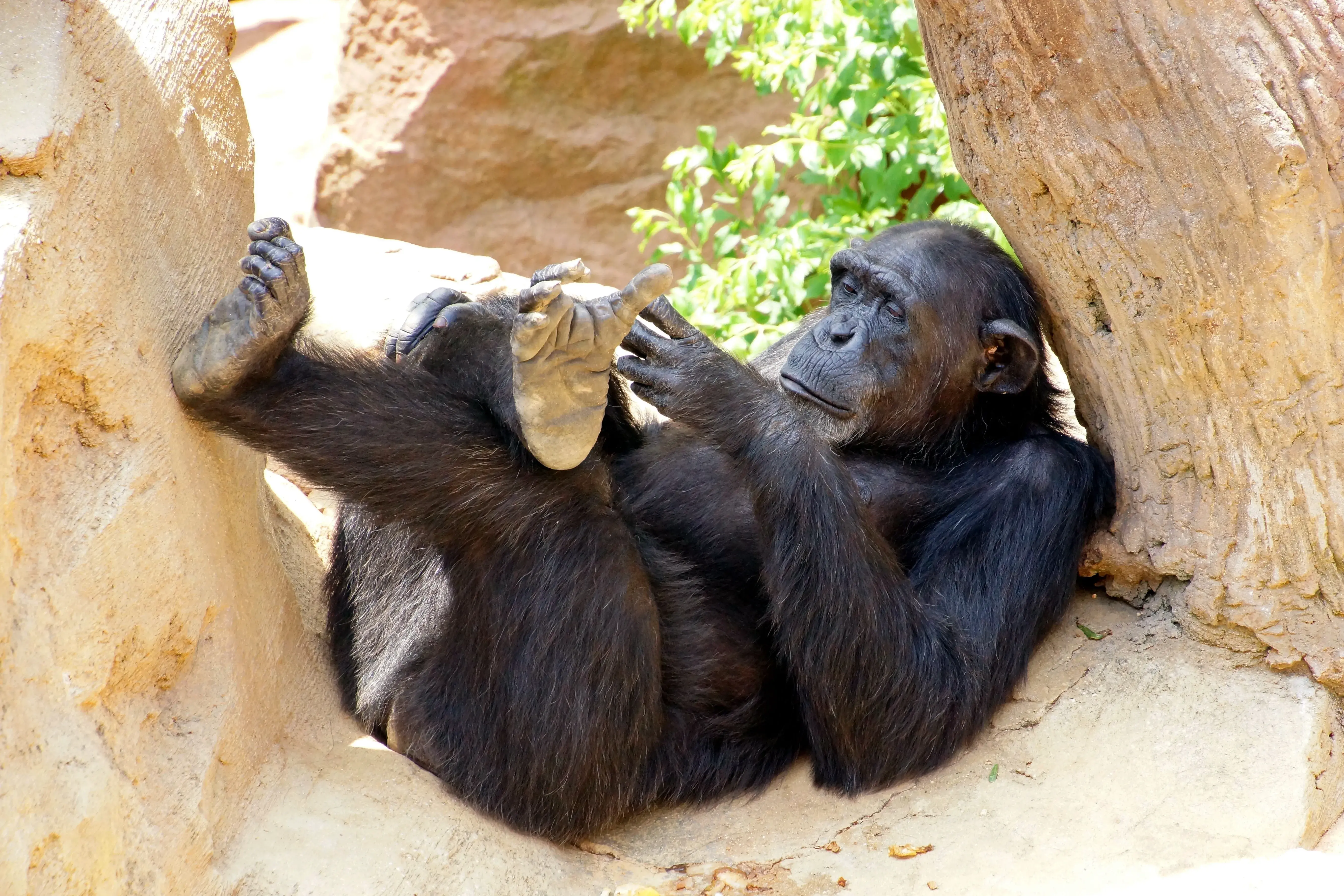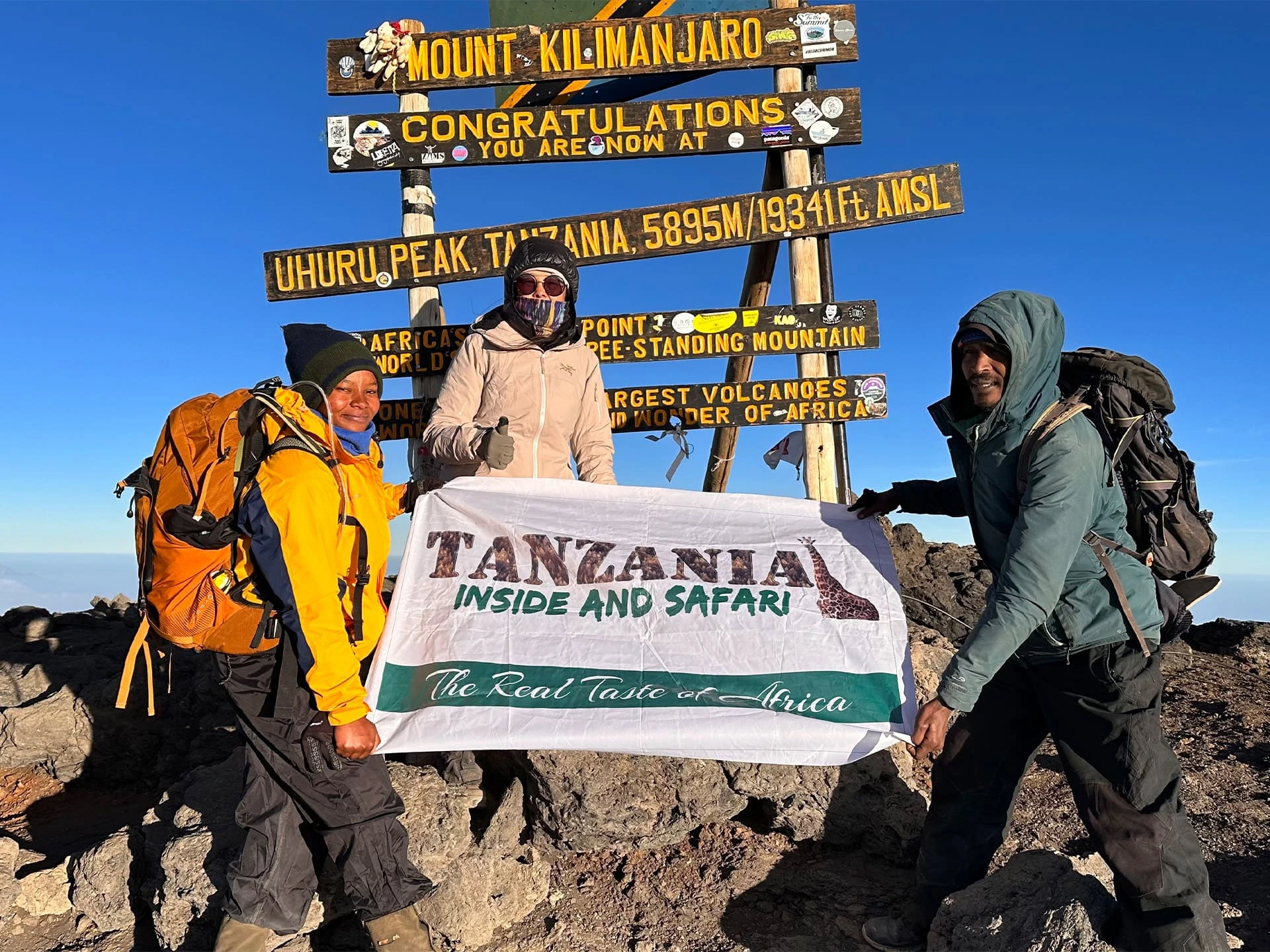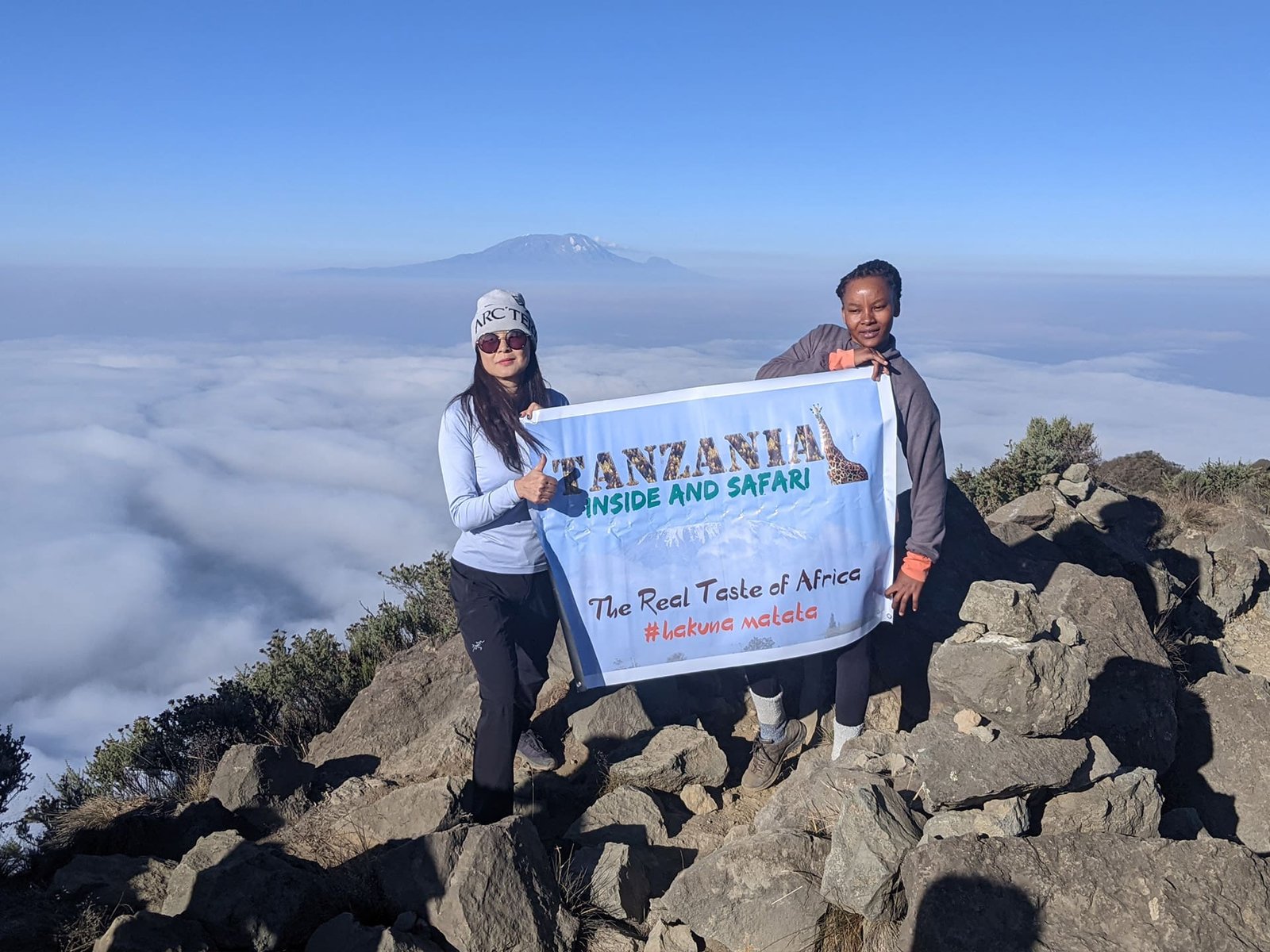
Kilimanjaro Weather
What is the Weather on Kilimanjaro?
The weather on Mount Kilimanjaro can vary from very hot to extremely cold within the same day although it does not experience wide temperature changes from season to season. Instead, the temperatures on Mount Kilimanjaro are determined more by the altitude and time of day.
At the base of the mountain, the average temperature is around 21 to 27 °C and at the summit, Uhuru Peak, the night time temperatures can range between 20 and -20 degrees Fahrenheit (-7 to -29 degrees Celsius). Like all great mountains, Kilimanjaro creates its own weather which can be extremely variable and difficult to predict. Hikers need to be prepared for warm, sunny conditions, and rain, wind, cold, and even snow.
Even though the best time to climb Kilimanjaro coincides with the “dry” seasons, rain, and snow are possible at any time of the year. As you get higher up, the temperatures can vary dramatically, one moment you can be trekking in baking sunshine, the next you’ll be layering up against a bitter wind.
Standing at 19,341 ft above sea level, Kilimanjaro is big enough to create it’s own weather systems. Being on the equator means the trade winds (sometimes called ‘monsoons’) that move across the ocean, drawing moisture upwards are interrupted by the mountain. This causes the wind to push up towards the summit, cooling as it goes, bringing rain and snow.
Is there snow on the top of Mount Kilimanjaro?
The long rainy season between March and May is a result of the trade winds from the south-east. These southerly winds from the Indian Ocean are laden with moisture, bringing rain to the lower slopes and snow on the top of Mount Kilimanjaro summit. During this season, the southern slopes get the most rainfall.
The ‘short rains’ in November are from a dryer wind coming from the northeast. As it hasn’t traveled across an ocean, the rains are shorter and less intense than during the long rains. Most of the rainfall during this season falls on the more northerly slopes.
Kilimanjaro Temperatures
Mount Kilimanjaro doesn’t experience wide temperature changes from season to season due to it’s proximity to the equator, Instead, the temperatures on Mount Kilimanjaro are determined more so by the altitude and what time of day it is. At the base of Mount Kilimanjaro where the climb starts, the average temperature is around 70 to 80 degrees Fahrenheit (21 to 27 degrees Celsius). From the base when you ascent, the temperatures will decrease as you go through mountain’s 5 ecological zones.
At the Summit of Kilimanjaro, Uhuru Peak, which lies in the arctic zone the night temperatures can range between 20 and -20 degrees Fahrenheit (-7 to -29 degrees Celsius). Therefore, we recommend that you should always be prepared for wet and cold nights so please bring the necessary gear at all times. Read more about what you need to carry on your day pack on Kilimanjaro
Kilimanjaro Weather through the Climate Zones
As you make your way higher up, you’ll notice the weather changing through the climate zones.
Cultivation Zone:
Altitude: 2,600 to 6,000 ft (800 to 1,800 m)
Precipitation: 20 to 70 in (500 to 1,800 mm)
Surrounding the base of Kilimanjaro is the cultivation zone. Comprising mostly farmland thanks to the fertile volcanic soil, this area gets plenty of annual rainfall. Mostly temperate conditions, you’ll mostly be passing through this region on your way to the trailhead.
Forest Zone:
Altitude: 6,000 to 9,200 ft (1,800 to 2,800 m)
Precipitation: 79 to 40 in (2,000 to 1,000 mm)
We start our climb in the montane forest, a tropical rainforest that serves to absorb most of the moisture coming off the mountain, forming underground streams and springs. Conditions are usually warm and humid, with mists forming under the dense canopy. Thick cloud cover is not uncommon, and it can be muddy underfoot.
Heath/Moorland Zone
Altitude: 9,200 to 13,200 ft (2,800 to 4,000 m)
Precipitation: 51 to 21 in (1,300 to 530 mm)
After hiking through the forest, you’ll emerge from the trees into the Heath and Moorland Zone. The dense tropical forest gives way to tall grasses and giant heathers, and you’ll be more exposed to the wind and rain.
Temperatures can remain warm throughout the day but drop significantly at night. The humidity lessens, the trails are dryer, and generally, it’s a more comfortable hiking experience. Rain tends to be minimal, although it can occur pretty much anywhere on the mountain.
The sun’s rays can be harsh, so you’ll need your sunscreen, and temperatures at night can be bitterly cold.
Alpine/High Desert Zone:
Altitude: 13,200 to 16,500 ft (4,000 to 5,000 m)
Precipitation: 10 in (250 mm)
Climbing higher still, we’ll enter the High Desert Zone, arid, with only small, hardy plants surviving at an altitude where wind speeds continue to increase and there is little rainfall.
Day time temperatures can still be quite warm, but in the evening the mercury drops quickly, with conditions getting much colder. Here, it is not uncommon to be camped well above the clouds, which makes for an enchanting sight on a clear, starlit night.
The views are far-reaching and dramatic, the trails dustier, and the air much thinner.
Arctic Zone:
Altitude: 16,500+ ft (5,000+ m)
Precipitation: 4 in (100 mm)
Above 16,000 ft is the Arctic or Summit Zone. With very little rainfall (most precipitation falls as snow) this barren desert is characterized by huge rocky outcrops, volcanic scree, and glaciers.
Known as “extreme altitude”, this region has approximately 49% of the oxygen at sea level. It’s a bleak, inhospitable place.
It’s very cold here, with blustery winds and nighttime temperatures well below freezing. As you set off for your summit attempt, there may be ice and snow underfoot, it’s bitterly cold, even at midday and the sun’s radiation is harsh.
Sunscreen is essential on any exposed parts of your body, the dry air will dehydrate you quickly, and you’ll need warm layers to keep your core temperature up.
Read more about Kilimanjaro altitude here.
Kilimanjaro Weather Variations
The weather varies based on the time of year you visit Kilimanjaro. During the months of April and May, it’s much rainier on the mountain than it is during the dryer season of June to October. January through March tends to be a bit colder.




















